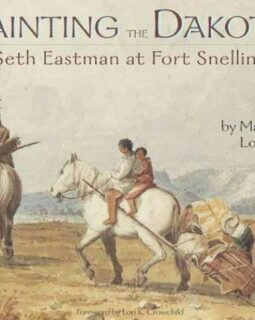Catalog
Ramsey County History – Spring 2003: “Sitting Bull and His 1884 Visit to St. Paul: ‘A Shady Pair’ and an ‘Attempt on His Life’”
Mark Diedrich, adapted by Paul D. NelsonSitting Bull and His 1884 Visit to St. Paul: ‘A Shady Pair’ and an ‘Attempt on His Life’ Authors: Mark Diedrich, adapted by Paul D. Nelson Sitting Bull, a symbol of Native American resistance, once came to St. Paul, an event not well covered in local newspapers. The Lakota…
Ramsey County History – Fall 2002: “Fur Trader, Banker, Danish Vice Consul: This Was the Borup of Borup’s Addition”
Virginia Brainard KunzFur Trader, Banker, Danish Vice Consul: This Was the Borup of Borup’s Addition Author: Virginia Brainard Kunz A short biographical sketch of Danish-born Charles William Wulff Borup, a man with a medical degree. He came to the Midwest in 1835 as an agent for the American Fur Company and…
Ramsey County History – Fall 2002: “Those Squealing Red River Ox Carts: Norman Kittson and the Fur Trade”
Clarence Rife and Holly WaltersThose Squealing Red River Ox Carts: Norman Kittson and the Fur Trade Authors: Clarence Rife and Holly Walters In 1830 at the age of sixteen, Canadian-born Norman Kittson joined the American Fur Company and headed west. He eventually arrived in Minnesota, where he joined Henry Sibley in the fur…
Ramsey County History – Spring 2001: “A ‘Good Man’ in a Changing World: Cloud Man, the Dakota Leader, and His Life and Times”
Mark DietrichA ‘Good Man’ in a Changing World: Cloud Man, the Dakota Leader, and His Life and Times Author: Mark Dietrich A compelling portrait of the Mdewakenton Dakota leader Cloud Man in Minnesota up to the early 1860s. Confronted by a dwindling population as his people lost their land and the…
Ramsey County History – Fall 2000: “Was That Really Cloud Man? The Pitfalls of Research: Two Leaders, Same Name”
Rhoda GilmanWas That Really Cloud Man? The Pitfalls of Research: Two Leaders, Same Name Author: Rhoda Gilman A short account of how information about two different Mdewakanton Dakota chiefs both of whom were named Cloud Man can cause confusion to the historical researcher. PDF of Gilman article…
Ramsey County History – Spring 2000: “The Two Worlds of Jane Gibbs: The Gibbs Farm and the Santee Dakota”
Julie A. HumannThe Two Worlds of Jane Gibbs: The Gibbs Farm and the Santee Dakota Author: Julie A. Humann This article begins with how a young girl, Jane DeBow, and the Santee Dakota people came to know and learn about each other, starting in 1834 when she was living near the…
Ramsey County History – Spring 2000: “Gummy, Yellow, White Flint Corn—The Dakota Garden at the Gibbs Museum”
Janet CassGummy, Yellow, White Flint Corn—The Dakota Garden at the Gibbs Museum Author: Janet Cass At the Gibbs Farm, which was established by Jane and Heman Gibbs in 1849 outside St. Paul, the museum there offers a view of pioneer and native gardens side-by-side. These demonstration plots allow visitors to…
Painting the Dakota: Seth Eastman at Fort Snelling
Marybeth Lorbiecki, Foreword by Lori K. Crowchild (Native American descendant of Seth Eastman)Readers learn about Dakota culture through Seth Eastman paintings. Painted during seven years on the frontier, these watercolor and oil paintings comprise the most significant source of information about Native American life in pre-territorial Minnesota. Softcover. Member Price: $15.00; Non-Member Price: $16.00. Order books here.
Ramsey County History – Spring 1999: “The Dakota Perspective: ‘We Have Been Cheated So Often’”
Mark DiederichThe Dakota Perspective: “We Have Been Cheated So Often” Author: Mark Diedrich Before white Minnesotans organized Minnesota as a territory in 1849, the Native American population of the region consisted mainly of Dakota, who had been living in the area of Lake Mille Lacs since the 1600s. One division of…
